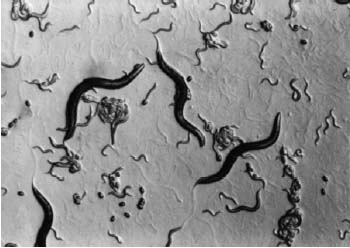

|
Host-Pathogen interactions are antagonistic relationships in which the survival of each side depends on its ability to defeat the other. As a result of these interactions, host organisms have developed surveillance and defence systems within their bodies to detect and eliminate invading microbes. Interestingly, some of the key features of hosts' defence mechanisms as well as the strategies employed by pathogenic microbes appear to have ancient origins and are seemingly conserved through phylogeny. Therefore, it is reasonable to believe that useful insights into the human-pathogen interactions can be gained from the use of invertebrates as models in cases that the pathogen can infect both humans and the model. |